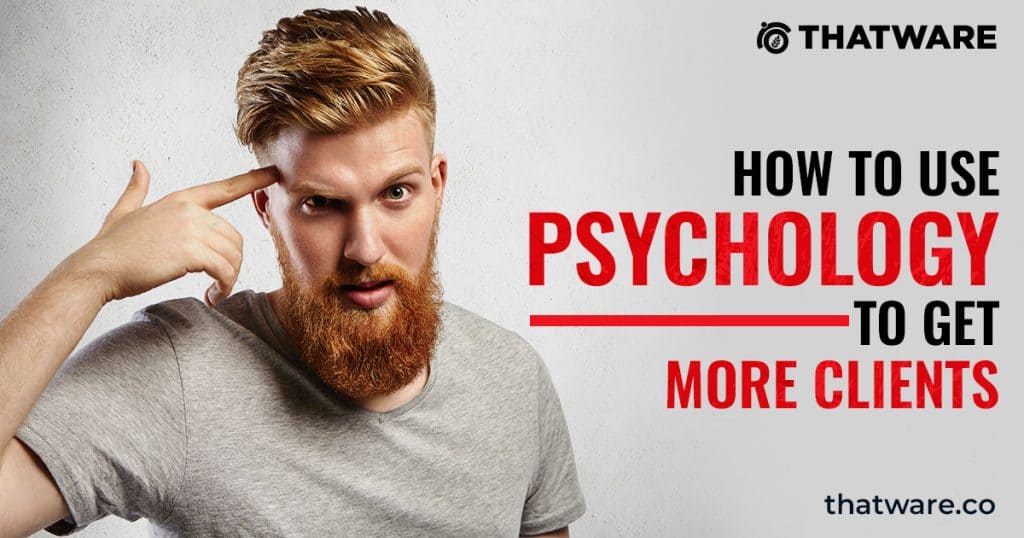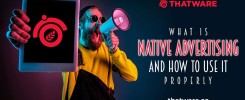The head. It serves as the brain’s command center for all bodily functions, and because it has so much to accomplish each day—including keeping you alive—it must rely on shortcuts for recall, problem-solving, and—what we’re discussing today—decision-making.

Therefore, being aware of these shortcuts when consumers make purchasing decisions can help you to comprehend, foresee, and influence their behaviors. You are not attempting to deceive or manipulate your customers and prospects. However, there are ways to exert influence over their decisions, decisions they will later regret.
Seven psychological principles that you can use in your marketing to sway prospects’ purchasing decisions are covered in this article.
⭐Marketing Psychology: What Is It?
Marketing psychology is known as the practice of aligning your content, communication, and strategies with the numerous predictable, frequently unconsciously occurring human behavioral patterns discovered through experimentation and research. Heuristics, a fancy term for shortcuts the brain uses for tasks it performs thousands of times every day, like understanding information, making decisions, and solving problems, are the source of these typical behaviors.
⭐7 Marketing Psychology Techniques To Sway Consumer Decisions
- The Consistency And Commitment Bias
According to the commitment and consistency bias, we tend to act by our prior expressions and behaviors.
A few of this phenomenon’s manifestations can be used by you in marketing.
- Establish a lead nurturing funnel.
When we abide by a small request, we are likelier to abide by subsequent similar requests. This is how the marketing funnel works! Small requests for your audience are made at the top of the funnel, and as the prospect descends to the bottom, the requests get progressively bigger.
- Have task progress indicators
The sunk cost fallacy is another example of the commitment bias, where we feel obligated to complete an action after devoting time and money to it.
- Divide your content into manageable chunks.
You can also use commitment and consistency bias to boost engagement with your content, especially long-form content over 5,000 words. Present the article to your audience as a series of bite-sized snacks rather than just asking them to commit to reading one long article that they may or may not find worthwhile.
- Bite: A brief passage of information devoid of specifics.
- Snack: A variety of bites. The audience wants more details but not more information.
- Meal: A substantial informational piece packed with specifics and in-depth justifications.
- The Bias In Anchoring
An individual’s propensity to use the first piece of information given as a standard for subsequent decisions is known as the anchoring bias. As you might expect, this strategy is especially helpful for pricing.
Examples and types of anchoring are provided below:
- Declare any markdowns
In addition to the buyer seeing this as a deal, a higher starting price typically conveys that the item is of higher value. Take note of the word “tends” Every company has a distinct audience with distinct views on price. Make sure you know how pricing changes impact how your customers perceive the quality of your products.
- Display the saved amount
Many SaaS and subscription businesses provide cheaper annual plans than monthly ones. The monthly rate for the month-to-month plan and the discounted monthly rate for the yearly plan are two additional ways to present this information.
It might be more worthwhile to show the total savings for the year if the difference is not all that significant.
- The Choice Paradox
Imagine you are at the grocery store and want to purchase some tea. The colorful packaging in the aisle looks fantastic as you approach it. However, as you begin browsing, you start to feel less than stellar. Black tea is available. Herbal tea. Probiotic. Sleep-enhancing. Memory improvement. And that only applies to one brand. You completely abandon the mission due to being overextended.
This is known as the paradox of choice.
According to the paradox of choice, the more options we have to choose from, the more pressure we feel to decide, and the more likely we won’t decide. Additionally, we are more likely to question whether our choice was the best. Here are some strategies to help your audience overcome analysis paralysis.
- Limit the number of options and varieties.
Consider limiting the options available to your audience if you want to increase conversion rates. Offer a discount on a subset of your products, or perhaps cut your five pricing tiers to just three.
- Specify a maximum number of items for your primary navigation menu.
While deviating from the norm is a key marketing component, there are still many instances in which doing so could be detrimental. The reality is that a website’s navigation bar should only contain 3-6 items.
When there are too many options, the visitor loses direction and is unsure what to do or where to go. To give them the mental energy to focus on the more crucial choices as they explore more of your website, you can reduce the number of menu options available to them.
- Use just one CTA per landing page.
Even though you’ve heard it a million times, it bears repeating. Each product or service should have its landing page with a single, obvious call to action. Multiple options will prevent your potential customers from taking the desired action you want them to, can create a less seamless user experience, and can decrease conversions. And you can’t afford to waste your advertising budget when you’re running paid ads.
- Removing the footers, social media buttons, and navigation
You may have removed the email signup button from the page where you want users to make a purchase right away. But are there any less obvious options to click on the page? Is there a footer at the bottom with lots of links? What about social media buttons that direct people to your profiles or let them share?
- Social Evidence
Social proof is a term that was developed by author Robert Cialdini and used in his book Influence to describe how people follow others in unfamiliar situations when they are exhibiting “appropriate” behavior. It’s how we ensure we’re comfortable, liked, and accepted.
What does that entail in terms of marketing? Testimonials. Reviews. Plus more. Here are a few strategies for using social proof to sway consumer decisions.
- Have a page with organized testimonials.
Make a testimonials page specifically for it so potential customers can see how others who are similar to them have benefited from your product.
- Add testimonials to your website.
You shouldn’t just save these for your testimonials page. Include them on your homepage and landing pages, preferably with headshots, to boost credibility.
- …and your advertisements
Reviews and testimonials also make for powerful ad copy. The copy in the advertisement below serves as the ad’s creative.
- Highlight recommendations from well-known brands
Listing prominent media outlets that have covered your product would be another comparable choice. Potential customers are more likely to trust and believe that you deliver results when they see these well-known names and faces recommending your company.
- Embrace the seals of approval
Include any partnerships, honors, or other trust indicators that speak to your credibility.
- Use the data to increase your subscriber base.
You don’t always need a well-known brand to earn people’s trust and get them to sign up for your offers. There is also the “wisdom of the crowd” strategy, in which you can boast that many people are utilizing your resources or goods.
- The Effect Of Reciprocity
Reciprocity is the human propensity to return a gesture with another like kind. Of course, this applies to positive behaviors as well.
Here is how positive marketing reciprocity appears.
- Provide top-notch customer support
Yes, it’s crucial to request reviews proactively, but if you concentrate on giving your clients a fantastic experience, you can bet that you’ll naturally gather them.
- Free (valuable) education and information
This summarizes both SEO and content marketing. No, your readers aren’t going to give you free education in return, but imagine if they had to choose between your business and a rival and you both had excellent reviews.
Not to mention, Google rewards quality content with better rankings.
- Provide trials and free tools
Offering a free trial of your software or a free tool would be a fantastic example of reciprocity in the B2B SaaS sector. Of course, WordStream has their Free Google Ads Performance Grader, which completes for you in a matter of minutes the audit work that would normally take over 40 hours. Again, if the choice is between two agencies, the buyer might be more likely to reward you for your free and valuable offerings with their patronage.
- The Effect Of Mere Exposure
In other words, preference is influenced by familiarity, even subconsciously.
Because of their low click-through rates, display ads are frequently written off as ineffective ad formats, but that is not their intended purpose. Display advertisements promote your company.
The more people are exposed to your company, the more familiar they become with it, and the more familiar they are with it, the more they will trust it, interact with it, and choose it over rivals. When you combine this with the effect of commitment and consistency, you have some repeat clients.
Because of this, brand awareness is crucial. Display ads can raise your other campaigns’ click-through and conversion rates. So you created the view-through conversion metric.
- You can use retargeting ads to raise CTR.
But not all display ads have low click-through rates. Retargeting ads can generate 2-3 times more clicks than standard display ads.
Watch your frequency, though, as if your ad keeps aggressively tracking a potential customer online, you could easily turn into that obnoxious brand that doesn’t respect privacy. They have time to adjust between exposures, which makes the repetitions more effective.
- Message consistency across all channels
Your brand assets, such as your website, blog posts, newsletters, advertisements, and other touchpoints, can all use repetition to reinforce your messaging and unique value proposition (USP). Your USP becomes more alluring as a prospect becomes more familiar with it. And for this reason, it’s crucial to incorporate a variety of channels and mediums into your content marketing strategy.
- Publicize your content
Promoting your content on social media, especially your guides and blog posts, and encouraging others to do the same is strongly recommended by the mere exposure effect. You can post the same content multiple times if you give yourself enough time between each posting.
- Have a signature look
Brand recognition measures how quickly a person can connect a piece of content they see or hear with your brand. Brand awareness measures how many people are aware of your brand.
You need a brand style guide and an appealing, attention-grabbing logo to increase brand recognition. To help people automatically associate your company with the look and feel of your content, stick to just a few colors and fonts.
- The Pygmalion Effect
You can apply this final psychological trick to your team and customers.
According to the Pygmalion effect, also referred to as the Rosenthal effect, if you or others believe something to be true about you, it will eventually come to pass. Thus, students are much more likely to perform better if their teachers have high expectations for them and are confident they can achieve them. You can obtain similar results by enthusiastically setting high standards for your staff.
- Organize your team and enhance the client experience.
This is why it’s crucial to decide on your brand’s core values and constantly remind your team of them. Individuals are given a set of standards and traits to aim for and incorporate into everything they do. They will increasingly truly embody those values as they receive more encouraging feedback. This results in a cohesive team and a consistent and outstanding customer experience.
- Expectations can shape realities.
Establish a constructive feedback loop with your clients.
You can also use this strategy to reach your audience directly. You can motivate people to behave in a way that is consistent with those beliefs by letting them know that a higher level of performance is possible, a better version of themselves is just around the corner, or they can become the best in their field.
The first step in these actions might be downloading your content or following you on social media. The more certain they can accomplish their goal with your assistance and that they are already there, the more likely they will become a customer. Even better, they may become devoted clients as they gradually succeed in their objectives.
Success will come if you hold your team to high standards and demonstrate to your customers that they are capable of achieving their objectives.
Use Psychology And Marketing In Tandem! Marketing and psychology work well together naturally, but there are ways to use psychology to boost your marketing results deliberately. Just keep in mind to concentrate on creating fantastic products and gaining the audience’s trust through ethical marketing techniques. It’s a combination that is more effective over time.


